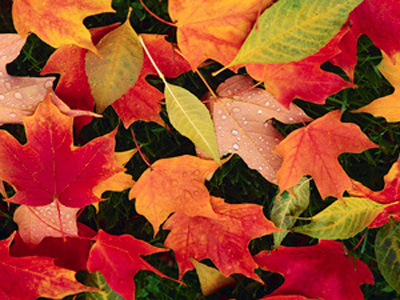The chemistry of the colours of autumn leaves

Forestry Commission England has lots of spectacular sites where people can enjoy leaf-peeping at the rainbow of colours this autumn, and with a natural firework display of red, yellow, purple, black, orange, pink, magenta, blue and brown lighting up our forests, autumn is a magical time of year to visit.
The leaves that start to change colour first include some of Britain’s native species such as common spindle, dog wood and wild cherry. In forests and arboretums where a greater variety of exotic trees can be seen, stars of the autumn show include reds oaks, full moon maples and Persian ironwood. Japanese maples, beech, oak and field maples will change later.
But why do the leaves change colour? What makes a maple leaf turn fiery red, a beech become golden or an ironwood transform through a rainbow of colours to deep plum purple?
Andrew Smith, the Forestry Commission’s Director at Westonbirt Arboretum explains:
“Different chemicals in leaves control the colours we see. During summer the leaves are packed with green chlorophyll, which harnesses energy from sunlight to combine water and CO2 to create sugars (plant food).
“However, once the tree shuts down as it prepares for winter, the chlorophyll breaks down and other coloured chemicals take over. Carotene (which give carrots their colour), anthocyanin’s and tannins give the instantly recognisable colours of autumn, making leaves appear yellow, red, and gold.”
To ensure you don’t miss out on this autumn’s sensory delights, Forestry Commission England has named its top ten autumn walks. From the Japanese maples which are famed for their spectacular colour at Westonbirt Arboretum, to Symonds Yat, with its dazzling view across the River Wye and the forest beyond, we have something for everyone this autumn. Top leaf-peeping walks include:
1. Westonbirt seasonal trail, The National Arboretum in Gloucestershire
2. Symonds Yat Rock to Biblins loop walk, The Wye Valley in the Forest of Dean
3. Radnor waymarked trail, Bolderwood, New Forest, Southampton
4. Lynford seasonal trail, Lynford Arboretum in Thetford Forest, Norfolk
5. Church path trail, Salcey Forest in Northampton
6. Red Walk, Great Wood in Somerset
7. Bedgebury Pinetum and Forest, Kent
8. Grizedale Tarn Trail, Grizedale Forest, Cumbria
9. Blackmore Trail, Delamere Forest, Cheshire
10.White Horse Trail, Friston Forest, East Sussex
The public are invited to keep the Forestry Commission informed on the colour transformation - from green to golden - as it is happening by using their interactive map. This will be displayed on their website throughout autumn, allowing you to find the best colour in your area.
This year, you can also join in the #autumnleafwatch phenomena by sharing photos of autumnal colours on the Forestry Commission’s Facebook, Instagram and Twitter pages. Throughout October the favorite pictures will be shared across their social media. As autumn draws to a close the public will be asked to vote for their favourite autumn image which will be displayed on the Forestry Commission’s autumn web page in 2016. The winner will also win Go Ape vouchers and a choice of either one year’s Forest Discovery Pass or Friends of Westonbirt Arboretum membership.
For autumn walks and information about events and exploring Westonbirt Arboretum this autumn, visit www.forestry.gov.uk/westonbirt-autumn.
Join in by sharing your photos of autumnal colours near to you on the Facebook page - Forestry Commission Woods and Forests.
Explore Gloucestershire
24 September 2015
For further information.
OTHER NEWS
